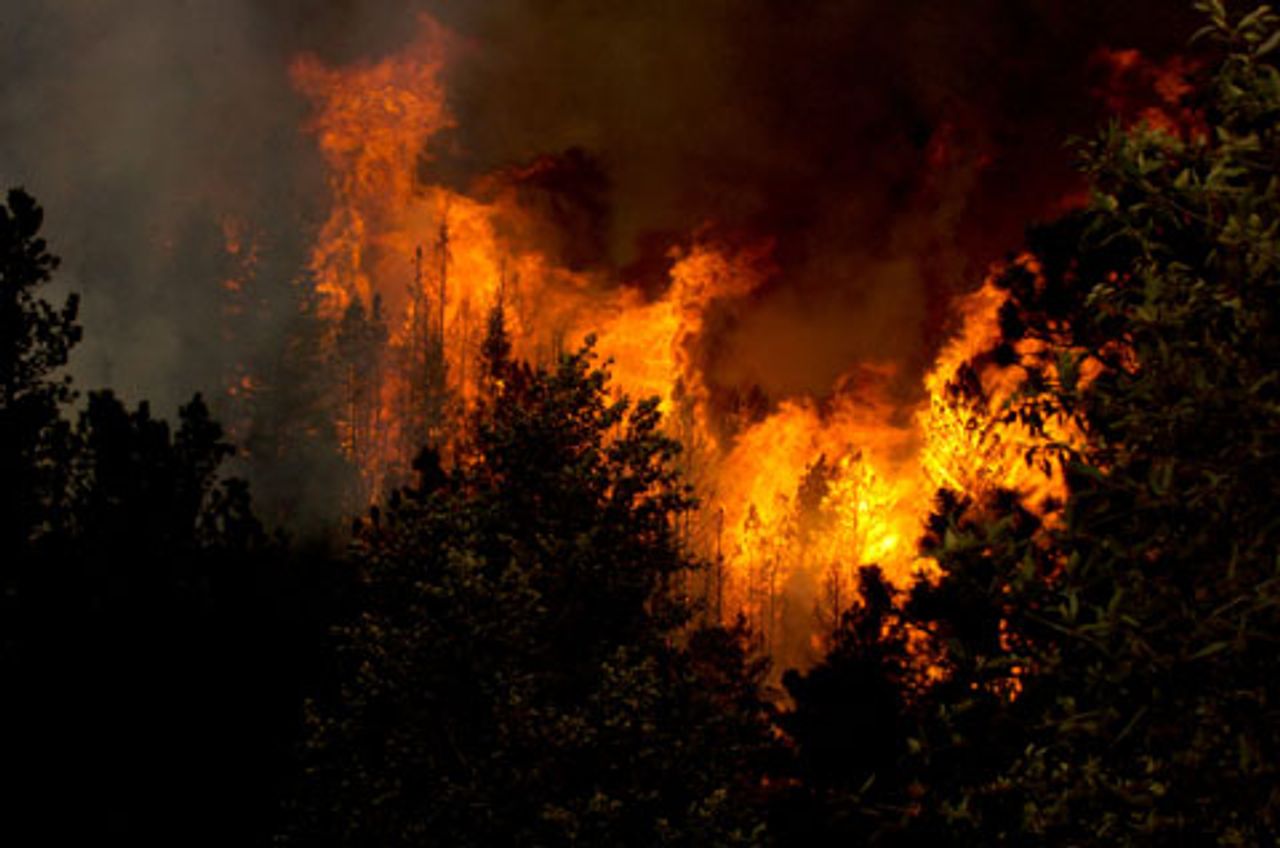 Fire raging through the Colorado high forest [Photo: US Air Force]
Fire raging through the Colorado high forest [Photo: US Air Force]Wildfires whipping through parts of the US state of Colorado have forced tens of thousands of people to flee their homes. Record heat, dry air and high winds have made controlling the fires extremely difficult.
The most active fire is the Waldo Canyon fire, near Colorado Springs, the state’s second most populous city. It has already destroyed an estimated 300 homes, and is only 5 percent contained. As of Thursday, it is estimated to have burned 18,500 acres of land.
The fast-growing wildfire started on June 23 but doubled in size overnight Tuesday night, amidst high winds. Some 32,000 people have been forced to flee their homes. The fire was burning two miles from the base of Pikes Peak, billed as the most visited mountain in North America.
It is a heavily populated area, and the extent of the damage so far is still not known. However, Colorado Springs Fire Chief Richard Brown declared, “This is a firestorm of epic proportions.”
Officials have said that more than 20,000 homes are threatened by the fire’s path. Thousands of people have been forced to take up camp in emergency shelters or hotel rooms.
Among the many other active fires in the state, the High Park fire has been the most damaging, though it is now largely contained. It consumed more than 250 homes and more than 87,200 acres of land near Fort Collins, which is 65 miles north of Denver.
Strong winds, all-time high temperatures, and dry conditions created disastrous conditions, as blazes increased and began to spread into populated areas this week. Weather factors were compounded by forests filled with dead trees from pine beetles that have ravaged the evergreens. This causes them to explode when on fire, thus spreading the fires more broadly.
Colorado has experienced some of the hottest weather ever recorded in the state. The National Weather Service reported that Colorado Springs broke its all-time record for maximum temperature on June 26, 2012, hitting 101 degrees, and 100 degrees or more for three out of four days.
On June 26, Pueblo broke its record high for the day at 106 degrees Fahrenheit. The temperature at Pueblo’s airport hit 105 degrees or higher for five consecutive days. The previous record for consecutive days of 105 degrees or higher was three days, set in 2003.
Fire conditions are not expected to improve too much across the region. Isolated thunderstorms are possible, but this could be a problem because these storms could spark more wildfires due to lightning. Also, strong winds can spread the wildfires into more regions of the state. Meanwhile, smoke and ash will create low visibility and make breathing difficult. There were reports that ash was falling in the air about the size of half dollars.
There are at least 20 uncontrolled fires raging in U.S. states, mostly in the West, stoked by wind and triple digit temperatures in some areas. In Utah a fire forced an estimated 1,500 people from their homes.
In some ecosystems natural fires are essential to maintain ecosystem dynamics, biodiversity and productivity. Carefully and scientifically controlled fire is also an important and widely used tool to meet land management goals. However, as we can see in the southwestern United States, wildfires destroy countless acres of forest woodlands and other vegetation, causing the loss of human and animal lives and enormous economic resources—yet to be tallied, both in terms of resources destroyed and the costs of suppressing the fire.
There are also impacts on society and the environment—for example, damage to human health from smoke, loss of biological diversity, release of carbon dioxide and other greenhouse gasses, damage to recreational areas, etc.
The trend towards more fires affecting larger areas and burning with greater severity may be increasing under the climate change. It is also associated with land-use changes and government financial constraints on sustainable forest and fire management.
A recent study of wildfires reviewing data to 2010 by the Food and Agricultural Organization of the United Nations (FOA) concluded that the main contributing elements of these wildfires are drought, fire meteorology, accumulation of fuel and homogenous or fire prone landscapes, which are often caused by lack of appropriate land management.
Budget cutting no doubt plays a role as well. Local fire and response budgets have been slashed throughout the country. Moreover, a report on examiner.com noted that the United States Forest Service has seen its fleet of large aerial vehicles reduced from 44 to nine over the past ten years. These vehicles are crucial for responding early to fires.
